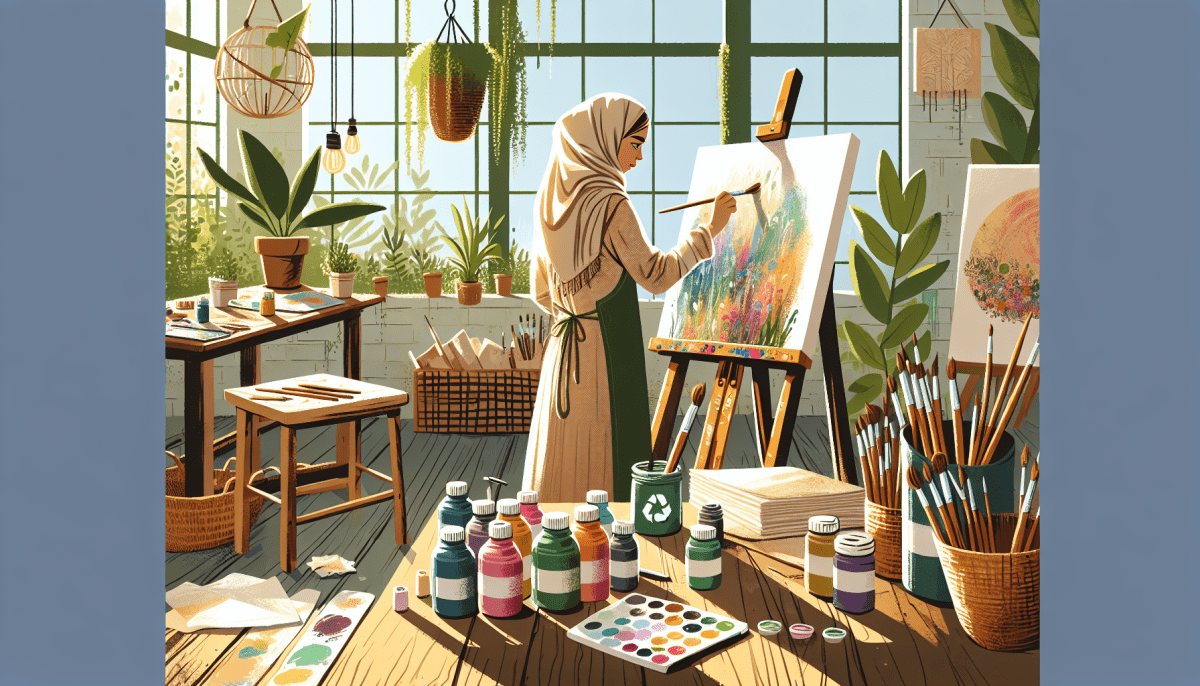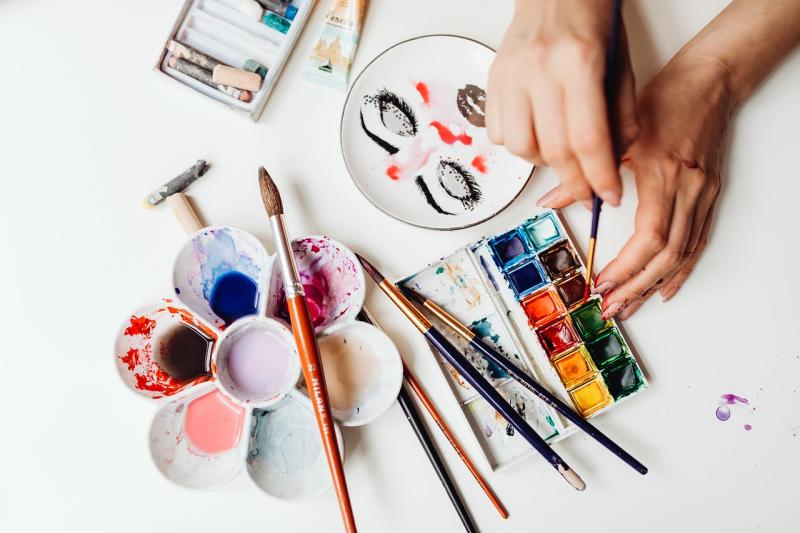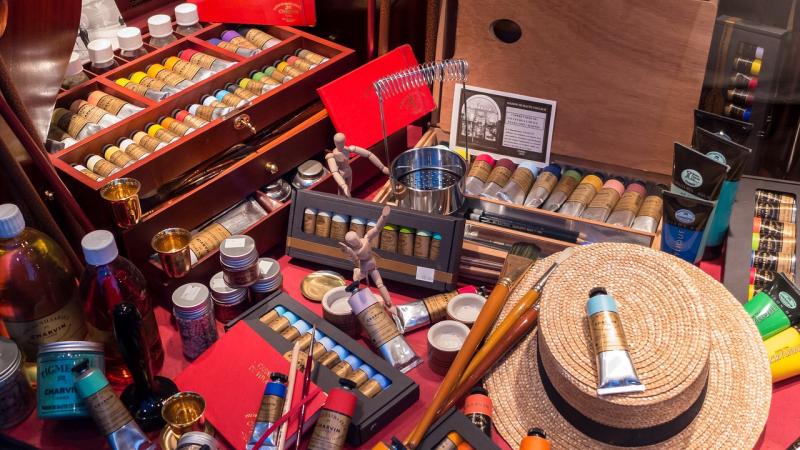When selecting paints, look for options that are water-based and free from toxic solvents. Acrylic paints made from natural pigments are a great choice, as they are biodegradable and less harmful to the environment. There are also non-toxic alternatives available, such as natural dyes and organic paints, that are perfect for artists interested in sustainability.
Don’t forget about the tools you use! Brushes made from natural fibers, such as hog hair or bamboo, are more sustainable than synthetic alternatives. Additionally, consider using recycled paper or canvas for your artwork. Many manufacturers now produce high-quality art papers made from post-consumer waste, allowing you to create beautiful pieces while supporting recycling initiatives.
Finally, support local artisans and companies that prioritize sustainable practices. Whether it's clay made from sustainable sources or eco-friendly adhesives, choosing products from responsible manufacturers can make a difference. Remember, every small change in your art supply choices can lead to a larger impact on the environment.
Techniques for Sustainable Artistic Practices
Artists today have a unique opportunity to embrace sustainable practices in their work. This not only helps the environment but also enriches the creative process. One effective technique is to use eco-friendly materials. This can include organic paints made from natural pigments, recycled paper, and sustainably sourced wood. By opting for materials that have a minimal impact on the planet, artists can create beautiful works while reducing their ecological footprint.
Another technique for sustainable artistic practices is to repurpose found objects. Artists can look around their homes or communities for items that would otherwise be discarded. Old magazines, fabric scraps, and even broken furniture can provide inspiration for new creations. This not only keeps waste out of landfills but also encourages a innovative mindset that embraces creativity and resourcefulness.
Engaging with nature is also an essential aspect of sustainable art. Artists can draw inspiration from the environment, using natural elements like leaves, flowers, or stones in their work. This not only highlights the beauty of the natural world but also promotes a deeper connection with it. Additionally, artists can consider creating temporary or site-specific installations that interact with the landscape, allowing their work to exist in harmony with its surroundings.
Lastly, participating in local art initiatives or community art projects can foster sustainable practices. Collaborating with other artists and community members allows for sharing resources, ideas, and techniques. By working together, artists can create impactful projects that raise awareness about environmental issues while celebrating local culture and community. This collective effort can inspire others to adopt more eco-friendly practices in their art and daily lives.
Benefits of Green Art Supplies
Using green art supplies can significantly impact our environment, making them a fantastic choice for eco-conscious artists. These supplies are typically made from non-toxic, biodegradable, and renewable materials, which means they are safer for both the artist and the planet. By opting for environmentally friendly options, artists contribute to reducing pollution and conserving resources, helping to maintain the beauty of our Earth.
Another benefit of green art supplies is their often superior quality. Many eco-friendly paints and materials are made with plant-based pigments and oils that can provide vibrant colors and unique textures. These natural ingredients not only enhance creativity but also tend to be more durable. This means that artwork created with sustainable supplies can stand the test of time, preserving the artist's vision without compromising environmental values.
Additionally, using sustainable supplies fosters a greater connection to nature. Many eco-friendly art products inspire artists to explore themes related to the environment and sustainability. This connection encourages creativity, as artists become more mindful of their impact on the world around them. By using green supplies, artists can express their values and raise awareness about important ecological issues through their work.
Finally, supporting companies that produce green art supplies can help drive the market toward more sustainable practices. When artists choose eco-friendly brands, they send a message that there is a demand for these products. This support can encourage innovation and growth within the industry, leading to more options for environmentally responsible art materials. In this way, artists become part of a larger movement towards sustainability, influencing both their communities and the broader art world.
Inspiring Examples of Eco-Conscious Artwork
Art has the power to inspire change, and many artists are using their talents to promote eco-consciousness. From large-scale installations to intricate sculptures, these creative individuals showcase how art can raise awareness about environmental issues while utilizing sustainable materials. One such artist is Chris Jordan, known for his stunning photographs that visualize the scales of consumerism and waste. His series, "Midway: Message from the Gyre," captures the heartbreaking impact of plastic pollution on seabirds. By transforming statistical data into compelling visual narratives, Jordan encourages viewers to rethink their consumption habits.
Another remarkable example is the work of El Anatsui, a Ghanaian artist who creates breathtaking wall hangings using discarded bottle caps and aluminum found in his native environment. His pieces not only highlight the beauty of recycled materials but also tell stories about African culture and the complexities of globalization. When viewers gaze upon his intricate tapestries, they engage in a dialogue about waste, sustainability, and the potential for transformation through art.
Street artist Banksy has also made significant contributions to eco-conscious art. In his piece titled "Season's Greetings," he painted a poignant winter scene that juxtaposes a joyous snowman with the harsh realities of climate change. His work often serves as social commentary, cleverly combining humor and disturbing truths to prod audiences into considering the urgency of environmental preservation. Banksy's art speaks to a global audience, making the issues of ecological crisis more relatable and accessible.
Lastly, sculptor Andy Goldsworthy employs natural materials like stones, leaves, and ice to create temporary installations that celebrate the beauty of nature. His ephemeral works, such as intricate stone sculptures and delicate leaf arrangements, remind us of the ever-changing environment and the importance of respecting it. Through his art, Goldsworthy emphasizes not only the aesthetic value of natural materials but also their role in fostering a deeper connection to our planet.



